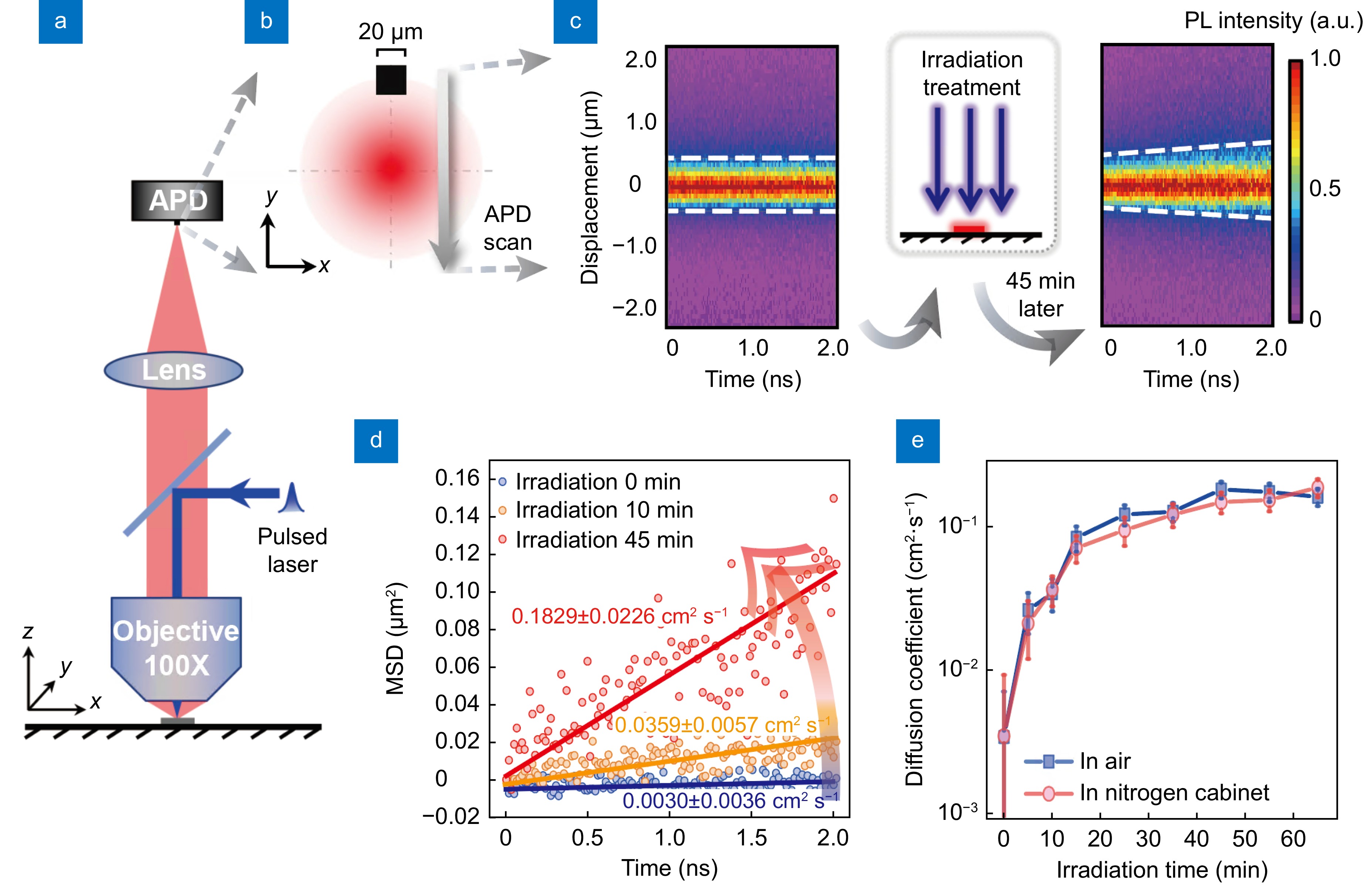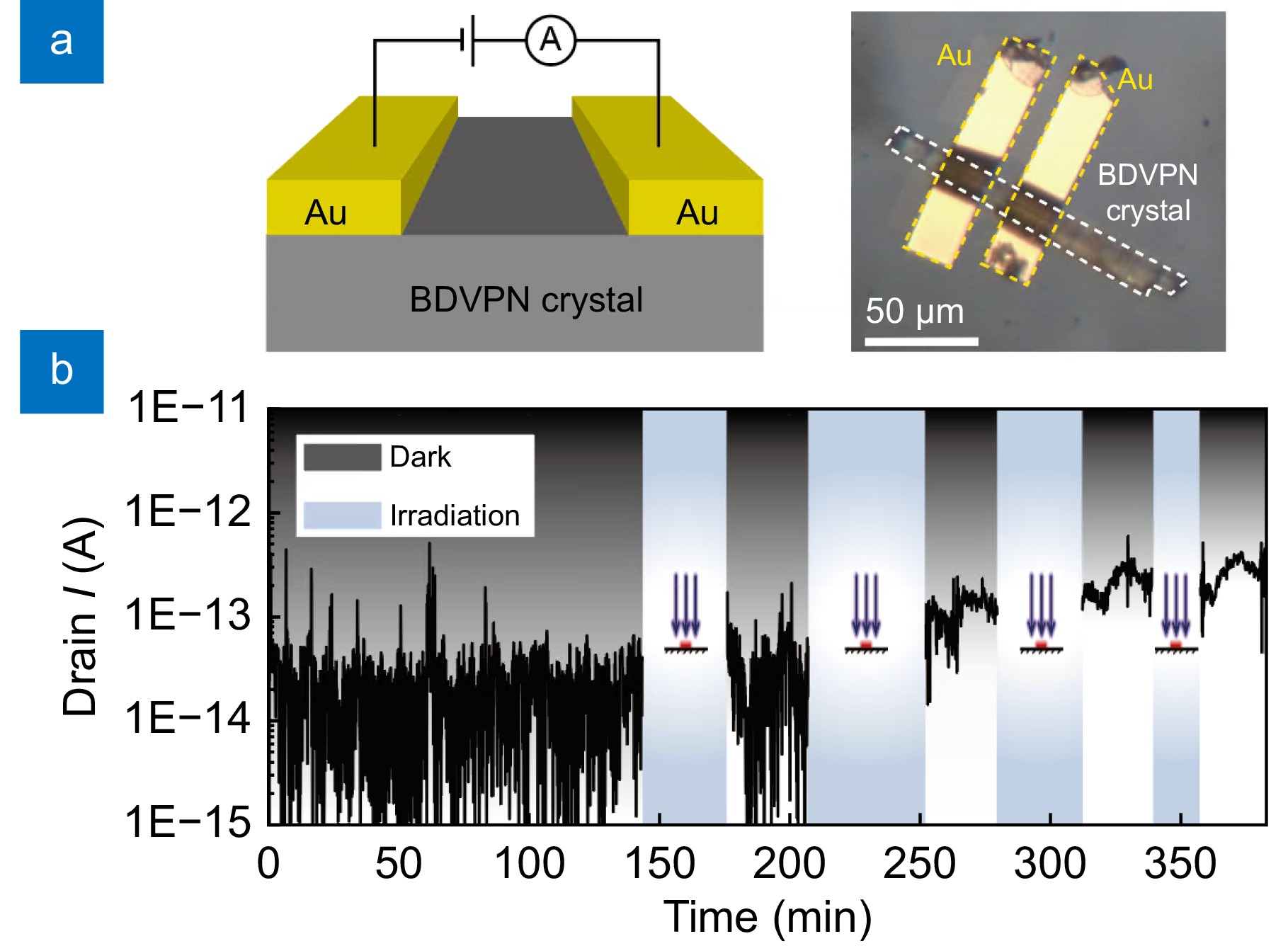| Citation: | Li XZ, Dai ST, et al. Light-induced enhancement of exciton transport in organic molecular crystal. Opto-Electron Adv 8, 240207 (2025). doi: 10.29026/oea.2025.240207 |
Light-induced enhancement of exciton transport in organic molecular crystal
-
Abstract
Efficient exciton transport over long distances is crucial for organic optoelectronics. Despite efforts to improve the transport properties of organic semiconductors, the limited exciton diffusion remains a significant obstacle for light-harvesting applications. In this study, we observe phenomena where exciton transport is significantly enhanced by light irradiation in the organic molecular crystal of 2,2'-(2,5-bis(2,2-diphenylvinyl)-1,4-phenylene) dinaphthalene (BDVPN). The exciton transport in this material is improved, as evidenced by the increased diffusion coefficient from 10−3 cm2·s−1 to over 1 cm2·s−1 and a prolonged diffusion length from less than 50 nm to nearly 700 nm characterized by time-resolved photoluminescence microscopy (TPLM). Additionally, we confirmed the enhancement of charge transport capability under irradiation as additional evidence of improved transport properties of the material. These intriguing phenomena may be associated with the material’s twisted molecular conformation and rotatable single bonds, which facilitate light-induced structural alterations conducive to efficient transport properties. Our work provides a novel insight into developing organic semiconductors with efficient exciton transport. -

-
References
[1] Menke SM, Luhman WA, Holmes RJ. Tailored exciton diffusion in organic photovoltaic cells for enhanced power conversion efficiency. Nat Mater 12, 152–157 (2013). doi: 10.1038/nmat3467 [2] Lu H, Chen K, Bobba RS et al. Simultaneously enhancing exciton/charge transport in organic solar cells by an organoboron additive. Adv Mater 34, 2205926 (2022). doi: 10.1002/adma.202205926 [3] Sneyd AJ, Fukui T, Paleček D et al. Efficient energy transport in an organic semiconductor mediated by transient exciton delocalization. Sci Adv 7, eabh4232 (2021). doi: 10.1126/sciadv.abh4232 [4] Alvertis AM, Haber JB, Engel EA et al. Phonon-induced localization of excitons in molecular crystals from first principles. Phys Rev Lett 130, 086401 (2023). doi: 10.1103/PhysRevLett.130.086401 [5] Mikhnenko OV, Blom PWM, Nguyen TQ. Exciton diffusion in organic semiconductors. Energy Environ Sci 8, 1867–1888 (2015). doi: 10.1039/C5EE00925A [6] Menke SM, Holmes RJ. Exciton diffusion in organic photovoltaic cells. Energy Environ Sci 7, 499–512 (2014). doi: 10.1039/C3EE42444H [7] Mikhnenko OV, Kuik M, Lin J et al. Trap-limited exciton diffusion in organic semiconductors. Adv Mater 26, 1912–1917 (2014). doi: 10.1002/adma.201304162 [8] Hedley GJ, Ward AJ, Alekseev A et al. Determining the optimum morphology in high-performance polymer-fullerene organic photovoltaic cells. Nat Commun 4, 2867 (2013). doi: 10.1038/ncomms3867 [9] Shaw PE, Ruseckas A, Samuel IDW. Exciton diffusion measurements in poly(3-hexylthiophene). Adv Mater 20, 3516–3520 (2008). doi: 10.1002/adma.200800982 [10] Markov DE, Tanase C, Blom PWM et al. Simultaneous enhancement of charge transport and exciton diffusion in poly (p-phenylene vinylene) derivatives. Phys Rev B 72, 045217 (2005). doi: 10.1103/PhysRevB.72.045217 [11] Lewis AJ, Ruseckas A, Gaudin OPM et al. Singlet exciton diffusion in MEH-PPV films studied by exciton–exciton annihilation. Org Electron 7, 452–456 (2006). doi: 10.1016/j.orgel.2006.05.009 [12] Balasubrahmaniyam M, Simkhovich A, Golombek A et al. From enhanced diffusion to ultrafast ballistic motion of hybrid light–matter excitations. Nat Mater 22, 338–344 (2023). doi: 10.1038/s41563-022-01463-3 [13] Liu B, Huang XJ, Hou SC et al. Photocurrent generation following long-range propagation of organic exciton–polaritons. Optica 9, 1029–1036 (2022). doi: 10.1364/OPTICA.461025 [14] Tichauer RH, Sokolovskii I, Groenhof G. Tuning the coherent propagation of organic exciton-polaritons through the cavity Q-factor. Adv Sci 10, 2302650 (2023). doi: 10.1002/advs.202302650 [15] Haedler AT, Kreger K, Issac A et al. Long-range energy transport in single supramolecular nanofibres at room temperature. Nature 523, 196–199 (2015). doi: 10.1038/nature14570 [16] Wittmann B, Wenzel FA, Wiesneth S et al. Enhancing long-range energy transport in supramolecular architectures by tailoring coherence properties. J Am Chem Soc 142, 8323–8330 (2020). doi: 10.1021/jacs.0c01392 [17] Jin XH, Price MB, Finnegan JR et al. Long-range exciton transport in conjugated polymer nanofibers prepared by seeded growth. Science 360, 897–900 (2018). doi: 10.1126/science.aar8104 [18] Wan Y, Stradomska A, Knoester J et al. Direct imaging of exciton transport in tubular porphyrin aggregates by ultrafast microscopy. J Am Chem Soc 139, 7287–7293 (2017). doi: 10.1021/jacs.7b01550 [19] Caram JR, Doria S, Eisele DM et al. Room-temperature micron-scale exciton migration in a stabilized emissive molecular aggregate. Nano Lett 16, 6808–6815 (2016). doi: 10.1021/acs.nanolett.6b02529 [20] Akselrod GM, Deotare PB, Thompson NJ et al. Visualization of exciton transport in ordered and disordered molecular solids. Nat Commun 5, 3646 (2014). doi: 10.1038/ncomms4646 [21] Najafov H, Lee B, Zhou Q et al. Observation of long-range exciton diffusion in highly ordered organic semiconductors. Nat Mater 9, 938–943 (2010). doi: 10.1038/nmat2872 [22] Wan Y, Guo Z, Zhu T et al. Cooperative singlet and triplet exciton transport in tetracene crystals visualized by ultrafast microscopy. Nat Chem 7, 785–792 (2015). doi: 10.1038/nchem.2348 [23] Ziegler JD, Zipfel J, Meisinger B et al. Fast and anomalous exciton diffusion in two-dimensional hybrid perovskites. Nano Lett 20, 6674–6681 (2020). doi: 10.1021/acs.nanolett.0c02472 [24] Xiao X, Wu M, Ni ZY et al. Ultrafast exciton transport with a long diffusion length in layered perovskites with organic cation functionalization. Adv Mater 32, 2004080 (2020). doi: 10.1002/adma.202004080 [25] Wagner K, Zipfel J, Rosati R et al. Nonclassical exciton diffusion in monolayer WSe2. Phys Rev Lett 127, 076801 (2021). doi: 10.1103/PhysRevLett.127.076801 [26] Mazzio KA, Luscombe CK. The future of organic photovoltaics. Chem Soc Rev 44, 78–90 (2015). doi: 10.1039/C4CS00227J [27] Ding DX, Wang ZC, Duan CB et al. White fluorescent organic light-emitting diodes with 100% power conversion. Research 2022, 0009 (2022). doi: 10.34133/research.0009 [28] Duan CB, Han CM, Zhang J et al. Manipulating charge-transfer excitons by exciplex matrix: toward thermally activated delayed fluorescence diodes with power efficiency beyond 110 lm W−1. Adv Funct Mater 31, 2102739 (2021). doi: 10.1002/adfm.202102739 [29] Chow PCY, Someya T. Organic photodetectors for next‐generation wearable electronics. Adv Mater 32, 1902045 (2020). doi: 10.1002/adma.201902045 [30] Liu K, Ouyang B, Guo XL et al. Advances in flexible organic field-effect transistors and their applications for flexible electronics. npj Flex Electron 6, 1 (2022). doi: 10.1038/s41528-022-00133-3 [31] Dai ST, Li XZ, Liu JW et al. Conformation‐confined organic butterfly‐molecule with high photoluminescence efficiency, deep‐blue amplified spontaneous emission, and unique piezochromic luminescence. Angew Chem Int Ed 64, e202414960 (2025); doi: 10.1002/anie.202414960 [32] Liu HP, Lu ZQ, Zhang ZL et al. Highly elastic organic crystals for flexible optical waveguides. Angew Chem Int Ed Engl 57, 8448–8452 (2018). [33] Penzo E, Loiudice A, Barnard ES et al. Long-range exciton diffusion in two-dimensional assemblies of cesium lead bromide perovskite nanocrystals. ACS Nano 14, 6999–7007 (2020). doi: 10.1021/acsnano.0c01536 [34] Shi ZF, Ni YZ, Huang JS. Direct observation of fast carriers transport along out-of-plane direction in a Dion–Jacobson layered perovskite. ACS Energy Lett 7, 984–987 (2022). doi: 10.1021/acsenergylett.2c00098 [35] Li XZ, Aihemaiti N, Fang HH et al. Optical visualization of photoexcitation diffusion in all-inorganic perovskite at high temperature. J Phys Chem Lett 13, 7645–7652 (2022). doi: 10.1021/acs.jpclett.2c01861 [36] Li ZD, Lu XB, Cordovilla Leon DF et al. Interlayer exciton transport in MoSe2/WSe2 heterostructures. ACS Nano 15, 1539–1547 (2021). doi: 10.1021/acsnano.0c08981 [37] Tagarelli F, Lopriore E, Erkensten D et al. Electrical control of hybrid exciton transport in a van der Waals heterostructure. Nat Photonics 17, 615–621 (2023). doi: 10.1038/s41566-023-01198-w [38] Sun Z, Ciarrocchi A, Tagarelli F et al. Excitonic transport driven by repulsive dipolar interaction in a van der Waals heterostructure. Nat Photonics 16, 79–85 (2022). doi: 10.1038/s41566-021-00908-6 [39] deQuilettes DW, Brenes R, Laitz M et al. Impact of photon recycling, grain boundaries, and nonlinear recombination on energy transport in semiconductors. ACS Photonics 9, 110–122 (2022). [40] An B, Li Z, Wang Z et al. Direct photo-oxidation of methane to methanol over a mono-iron hydroxyl site. Nat Mater 21, 932–938 (2022). doi: 10.1038/s41563-022-01279-1 [41] Wang H, Yong DY, Chen SC et al. Oxygen-vacancy-mediated exciton dissociation in BiOBr for boosting charge-carrier-involved molecular oxygen activation. J Am Chem Soc 140, 1760–1766 (2018). doi: 10.1021/jacs.7b10997 [42] Mateker WR, McGehee MD. Progress in understanding degradation mechanisms and improving stability in organic photovoltaics. Adv Mater 29, 1603940 (2017). doi: 10.1002/adma.201603940 [43] He D, Zeng M, Zhang ZZ et al. Exciton diffusion and dissociation in organic and quantum-dot solar cells. SmartMat 4, e1176 (2023). doi: 10.1002/smm2.1176 [44] Sajjad MT, Ruseckas A, Samuel IDW. Enhancing exciton diffusion length provides new opportunities for organic photovoltaics. Matter 3, 341–354 (2020). doi: 10.1016/j.matt.2020.06.028 [45] Sneyd AJ, Beljonne D, Rao A. A new frontier in exciton transport: transient delocalization. J Phys Chem Lett 13, 6820–6830 (2022). doi: 10.1021/acs.jpclett.2c01133 [46] Lu T, Chen QX. Interaction region indicator: a simple real space function clearly revealing both chemical bonds and weak interactions. Chem–Methods 1, 231–239 (2021). [47] Spackman PR, Turner MJ, McKinnon JJ et al. CrystalExplorer: a program for Hirshfeld surface analysis, visualization and quantitative analysis of molecular crystals. J Appl Crystallogr 54, 1006–1011 (2021). doi: 10.1107/S1600576721002910 [48] Janiak C. A critical account on π–π stacking in metal complexes with aromatic nitrogen-containing ligands. J Chem Soc, Dalton Trans 3885–3896 (2000). doi: 10.1039/B003010O [49] Spackman MA. Molecules in crystals. Phys Scr 87, 048103 (2013). doi: 10.1088/0031-8949/87/04/048103 [50] Dubin F, Melet R, Barisien T et al. Macroscopic coherence of a single exciton state in an organic quantum wire. Nat Phys 2, 32–35 (2006). doi: 10.1038/nphys196 [51] Engel GS, Calhoun TR, Read EL et al. Evidence for wavelike energy transfer through quantum coherence in photosynthetic systems. Nature 446, 782–786 (2007). doi: 10.1038/nature05678 [52] Cao JS, Cogdell RJ, Coker DF et al. Quantum biology revisited. Sci Adv 6, eaaz4888 (2020). doi: 10.1126/sciadv.aaz4888 -
Supplementary Information
Supplementary information for Light-induced enhancement of exciton transport in organic molecular crystal 
-
Access History

Article Metrics
-
Figure 1.
Crystal geometries and basic optical properties. (a) Chemical structure. (b) Optical microscope image of a BDVPN crystal under UV light (365 nm) (up) and schematic growth morphology of the crystal (down). (c) Schematic diagram of molecular packing viewed from a-axis. BDVPN molecules present herringbone packing mode and are aligned layer by layer along the b-axis (long axis of the crystal). (d) UV-vis and PL spectra, and (e) Time-resolved PL of the BDVPN crystal.
-
Figure 2.
Irradiation-induced exciton diffusion enhancing and the roles of oxygen and water. (a) Schematic of the home-built TPLM. The PL signal is magnified at the image plane, as shown in (b), and the time-resolved APD is scanned across the PL spot to generate a spatial-temporal map of PL intensity. (c) The spatial-temporal PL intensity map of a BDVPN crystal before and after irradiation treatment by a collimated strip-shaped 405 nm CW laser (4 W cm−2). (d) The measured MSD over time of the BDVPN crystal after being irradiated for 0 minutes (before irradiation), 10 minutes, 45 minutes. The solid lines show the results of linear fit, and resulting three diffusion coefficients of 0.0030±0.0036 cm2·s−1, 0.036±0.006 cm2·s−1, and 0.18±0.02 cm2·s−1. (e) The evolution of exciton diffusion coefficient of two BDVPN crystals under irradiation, where one crystal was exposed to ambient air and the other to a nitrogen environment.
-
Figure 3.
Impact of long period irradiation in nitrogen cabinet on diffusion parameters and PL properties. (a) The evolution of exciton diffusion coefficient after irradiation. The values are statistics results, each taken from several tests (see section SI1, Supporting Information). The inset shows the data corresponding to the first stages (blue dashed area) under logarithmic coordinates. (b) The fast broadening of PL emission over time for the BDVPN crystal irradiated for 145 hours. Compared with Fig. 2(c), the enhancement in exciton diffusion was visualized. (c) The evolution of exciton lifetime and diffusion length after irradiation. (d) Redshift of PL spectra with irradiation time.
-
Figure 4.
Enhancement of charge transport under irradiation. (a) Schematic and optical microscope images of the electrical device, two Au film electrodes were transferred to the crystal. (b) The evolution of dark current (at a 60 V applied voltage) of the BDVPN crystal over time before and after the irradiation treatment (405 nm CW laser, 60 mW ·cm−2).
-
Figure 5.
Intermolecular interactions analysis. (a) The isosurface map of the IRI for the BDVPN crystal. IRI analysis provides additional insights into intra- and intermolecular interactions through gradient isosurfaces and corresponding colors (determined by sign(λ2)ρ values). (b) Molecular packing and intermolecular interactions of the crystal (The molecules drawn in orange and blue are the same conformation but arranged in different directions). (c) Hirshfeld surface of the BDVPN crystal. The red spots represent the close contact of C···H.
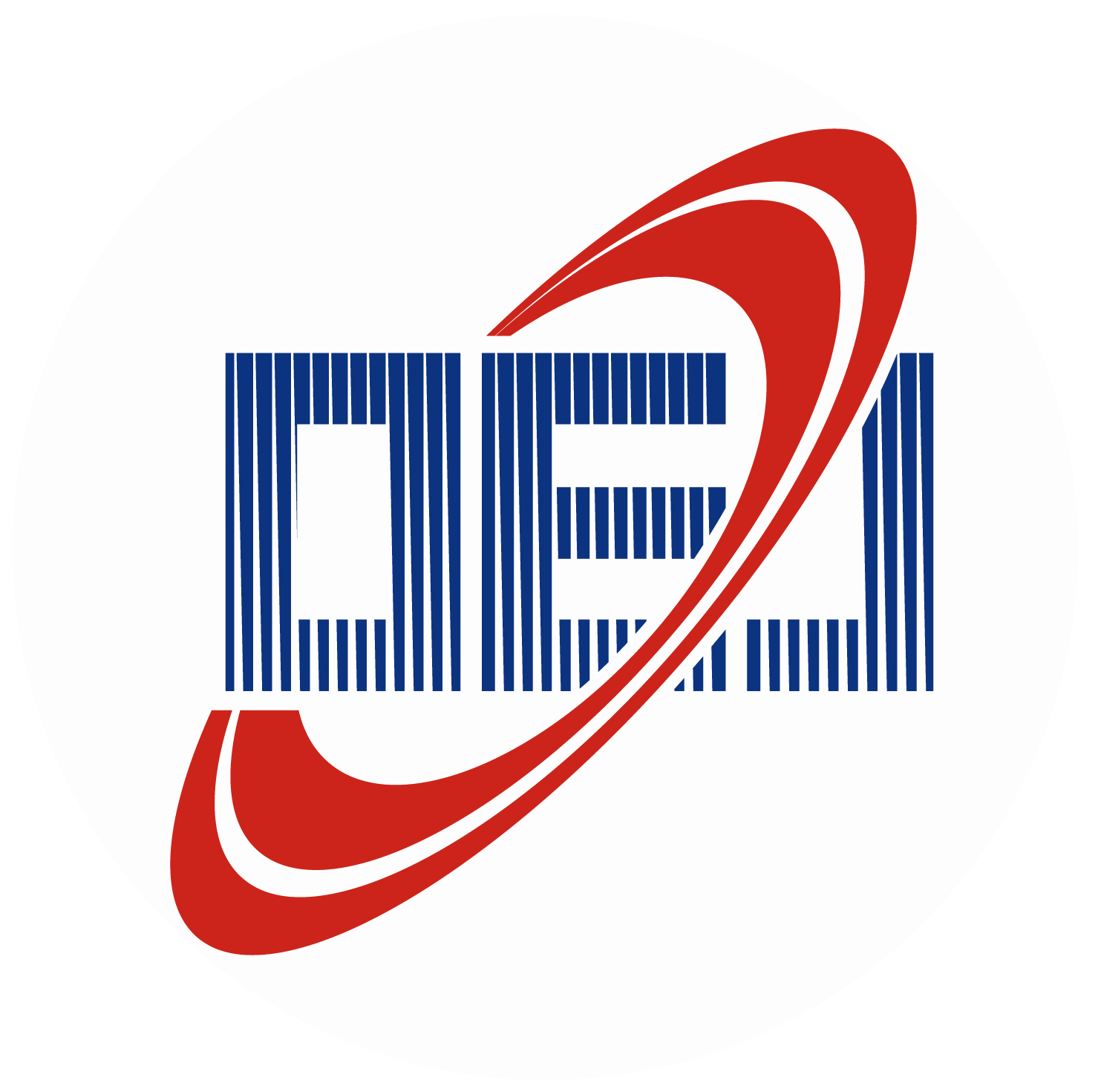
 E-mail Alert
E-mail Alert RSS
RSS
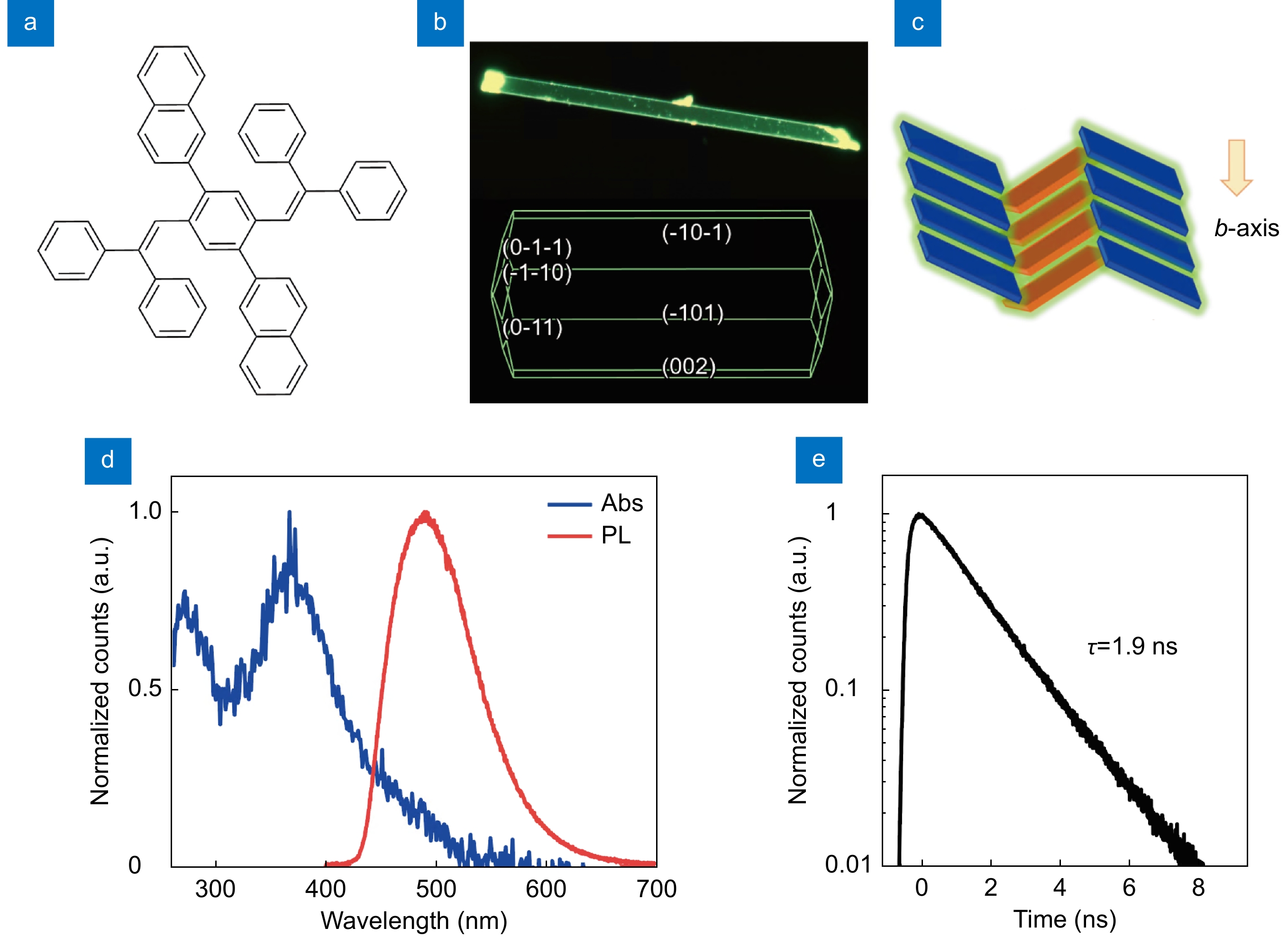

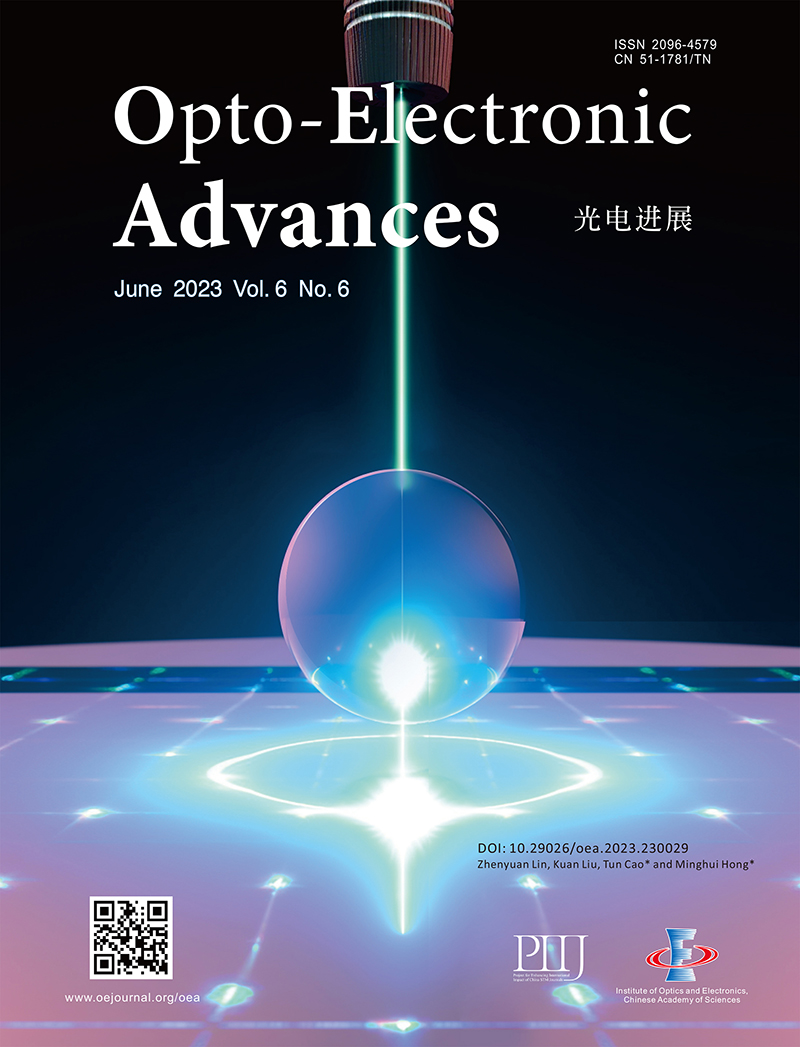
 DownLoad:
DownLoad:
